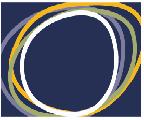Mediated Memory: Of Monuments, Machines and Madeleines
While the papers ranged far beyond what is generally considered to be the boundaries of the recordkeeping disciplines, much of the material was of at least contextual interest to the work of recordkeeping professionals, and some of it directly relevant.
The programme was split into three panels, under the thematic headings of 'Madeleines', 'Machines', and 'Monuments'. After tea and Madeleines (in homage to Proust's famous 'memory moment'), the day's business started with a keynote speech on 'Hand, Writing and Memory' from Dr Mariangela Palladino of the University of Glasgow.
 The papers presented in the 'Madeleines' panel were all related in some way to the manner in which memory, as opposed to specific memories or memorials, is psychologically constructed and organized - Aislinn Hunter's paper on the resonance of 'beloved objects', though focusing on museum or heritage objects, is also readily applicable to the way in which iconic documents and records are viewed.
The papers presented in the 'Madeleines' panel were all related in some way to the manner in which memory, as opposed to specific memories or memorials, is psychologically constructed and organized - Aislinn Hunter's paper on the resonance of 'beloved objects', though focusing on museum or heritage objects, is also readily applicable to the way in which iconic documents and records are viewed. The 'Machines' panel explored, as one mught imagine, some of the uses or effects of technology in constructing memory and memorials. A couple focused on 'technological' memorials (a video installation of a Thai village which had suffered in past conflicts, a 'Sonic Memorial' of the Twin Towers); while readers of Derrida's 'Archive Fever' will be familiar with the terms in which Galit Wellner discussed the mobile phone as 'memory prosthesis'.
The 'Machines' panel explored, as one mught imagine, some of the uses or effects of technology in constructing memory and memorials. A couple focused on 'technological' memorials (a video installation of a Thai village which had suffered in past conflicts, a 'Sonic Memorial' of the Twin Towers); while readers of Derrida's 'Archive Fever' will be familiar with the terms in which Galit Wellner discussed the mobile phone as 'memory prosthesis'. The final panel on 'Monuments' perhaps provided the closest analogues to recordkeeping. Two of the papers showed how the past could be tendentiously re-written or re-presented to back current political and ideological concerns (in one case, by physical monuments, in the other, through literature). A third dealt with a case where the published version of a work differed in certain key respects from the earlier private version, and considered possible reasons for this re-writing of the record (or at any rate, of the earlier interpretation).
The final panel on 'Monuments' perhaps provided the closest analogues to recordkeeping. Two of the papers showed how the past could be tendentiously re-written or re-presented to back current political and ideological concerns (in one case, by physical monuments, in the other, through literature). A third dealt with a case where the published version of a work differed in certain key respects from the earlier private version, and considered possible reasons for this re-writing of the record (or at any rate, of the earlier interpretation).
Finally, Maria Francesca Martinez Tagliavia provided an exhilarating analysis of Blob, a short mash-up feature used as a filler on the Italian Rai Tre TV channel, which weaves a range of documentary and non-documentary material into a new video text of ironic, iconoclastic commentary in the belly of the Berlusconi-dominated beast.
This brief report can give only the barest sense of the complexity and richness of the papers and discussions; fortunately, an edited volume of proceedings is likely to be published at a later stage. In the meanwhile, a full list of speakers and abstracts, along with further details on the nature of the symposium in the Call for Papers, is available at event's Facebook group pages.



1 comment:
thanks. mfmt
Post a Comment